On the night of February 6, Kahramanmaraş was shaken by an earthquake of 7.7 magnitude. Unfortunately, this earthquake was followed by another 7.6 magnitude earthquake. We lost thousands of our citizens due to earthquakes that happened one after another. In this process, the Disaster and Emergency Management Presidency (AFAD) teams rushed to the aid of those who were under the rubble and the survivors.
Vehicles within the body of AFAD running to help in the earthquake area
AFAD, which makes the first interventions in the earthquake area, hosts many different vehicles. The organization, which rushes to the aid of the citizens in other disasters as well as the earthquake, has different types of vehicles according to the needs. We brought those tools together.
Transfer vehicles
AFAD Deployment Vehicles are used to collectively reach disaster and emergency areas for experts working in disaster management. Some of the transfer vehicles, which can carry 16 employees at the same time, have a carrying capacity of up to 31. Deployment vehicles enable employees working at different stages of disaster management, such as AFAD Search and Rescue Specialist, social worker, engineer and AFAD Specialist, to reach the field.

Communication and image transfer tools
AFAD Communication and Image Transfer Tools, alternative communication methods and live broadcast via satellite able camera systems equipped with. Vehicles with VSAT, 4.5G and GSM equipment and active connections can transmit voice, data and images from the field to the emergency center and provide communication. These vehicles have the capacity to provide communication and image transmission from all points of the world to any designated point without the need for any other equipment.
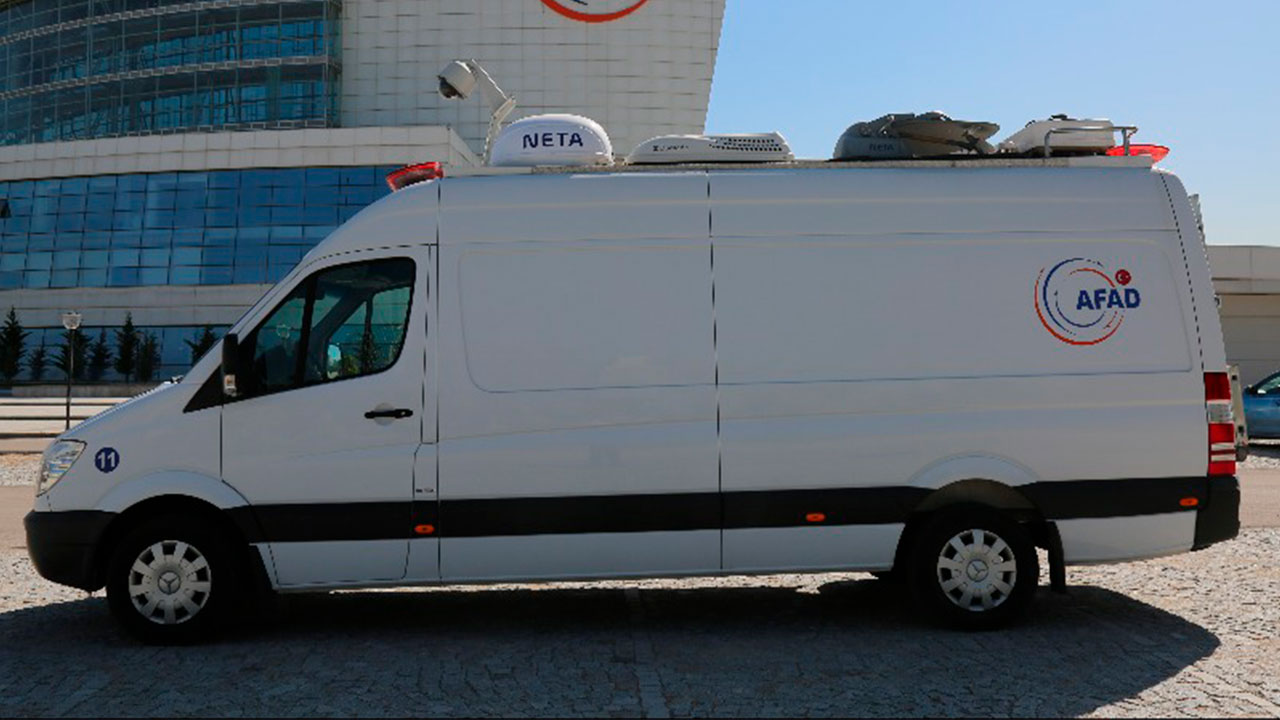
mobile disaster coordination center
AFAD Mobile Coordination Centers are located in the region where disaster and emergency situations are experienced. a mobile emergency center works as a function. field office These vehicles serving as; system room, office area (process room), kitchen, shower and toilet. from 4 independent sections is formed.
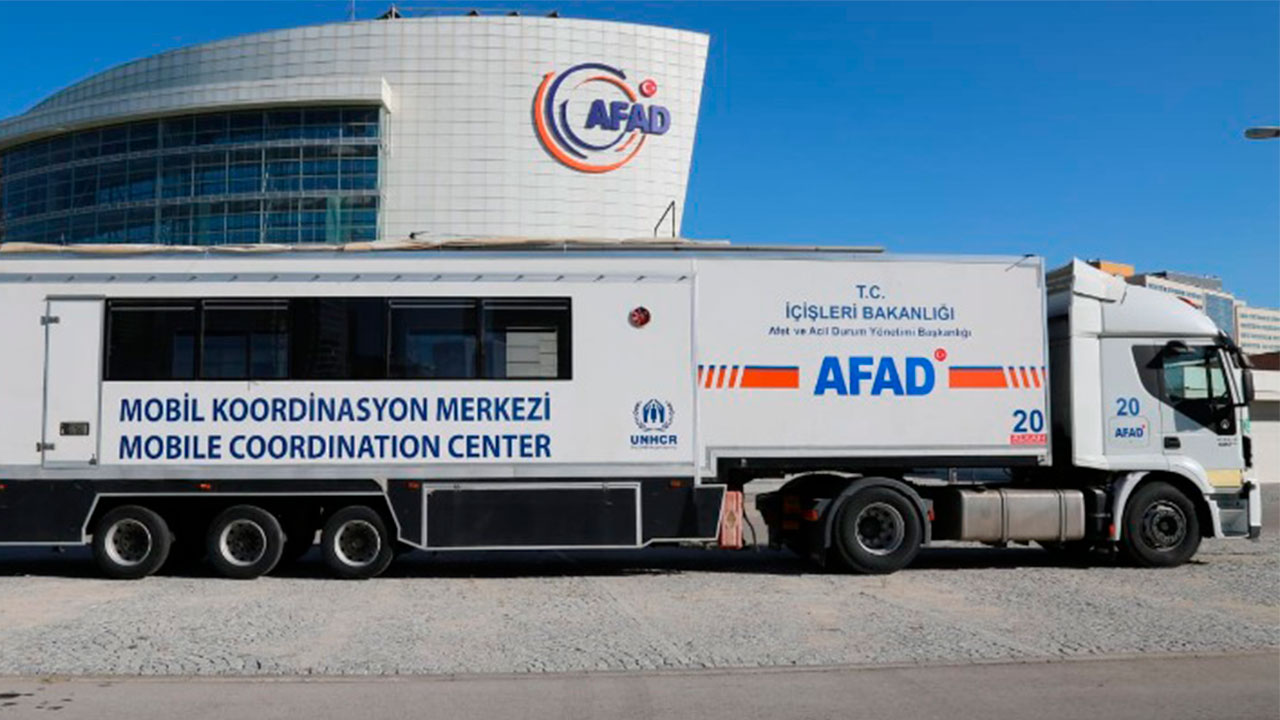
The centers are arranged in such a way that 16 personnel can work at the same time. With the modular office space inside, desktop work can be done. in the office areaIt allows working as a team with computers, servers, printers and led screens. Mobile centers house cameras and lighting in the outer part and a generator in the lower part. Centers equipped with 4.5G data transfer system, V-SAT system and HF-SSB It is also powered by radio.
Compact operation tools
AFAD Compact Operations Vehicles are prepared to respond to relatively minor emergencies that affect individuals rather than the masses. These 4×4-wheel drive vehicles are also equipped with basic search and rescue equipment in their chassis. a minimal mobile search and rescue station functions.

Weight advantage And high acceleration capability With these vehicles, these vehicles are more efficient in urban search and rescue and open field operations. Loss finding people and micro rescue in the city to the expert team in limited operations such as face And flexibility of movement stands out for providing
Heavy tonnage search and rescue vehicles
AFAD Heavy Tonnage Search and Rescue Vehicles are designed to respond to large-scale disasters and emergencies. It contains the materials, equipment and equipment that at least 2 search and rescue teams can work at the same time. For easy movement in the field 6×6 wheel drive meanstools, 28 tons of transport And 8.5 tons towing has the capacity.
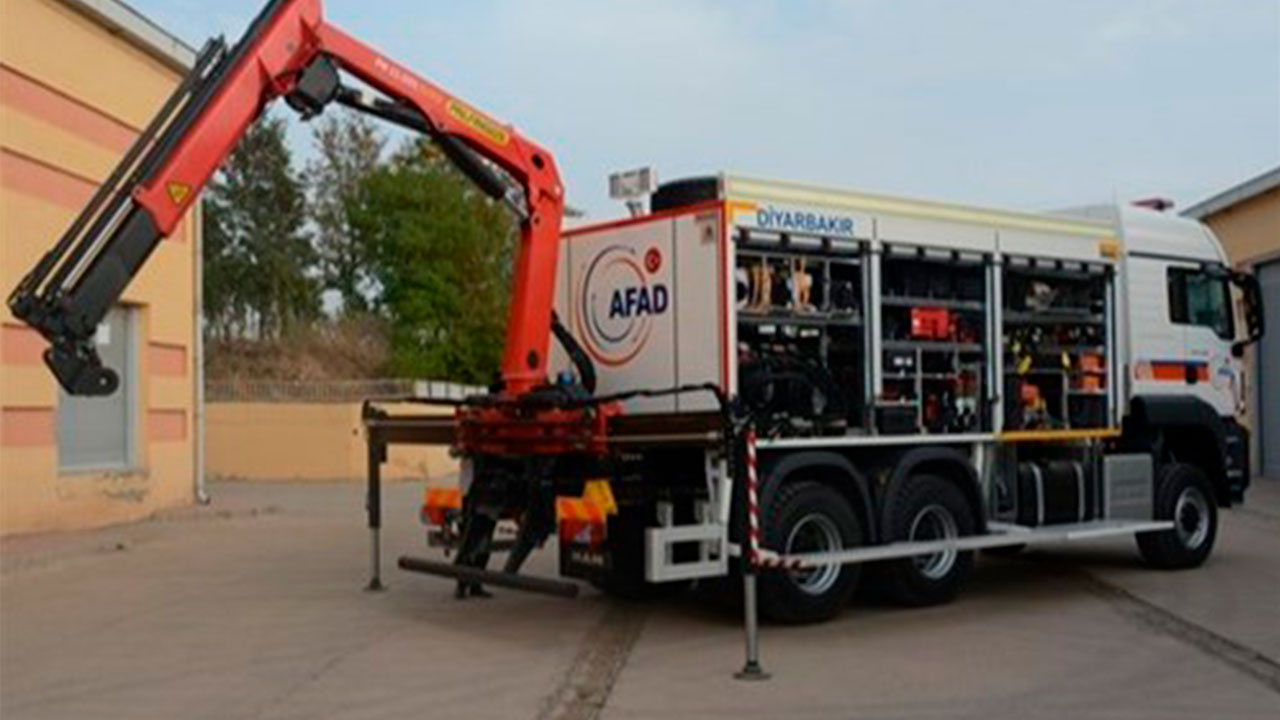
vehicles, on 80,000 lumens able with light tower can illuminate the work area and the light tower Can rotate 360 degrees. With a 13.6 kW generator system, a significant amount of can generate electricity. Tools, integrated up to 2.6 tons thanks to the crane system able to lift weights.
Medium tonnage search and rescue vehicles
AFAD Medium Tonnage Search and Rescue Vehicles, 22 separate full-fledged rescue equipment And 4×4 traction has system. In cases where light tonnage vehicles cannot cope, these vehicles take over.
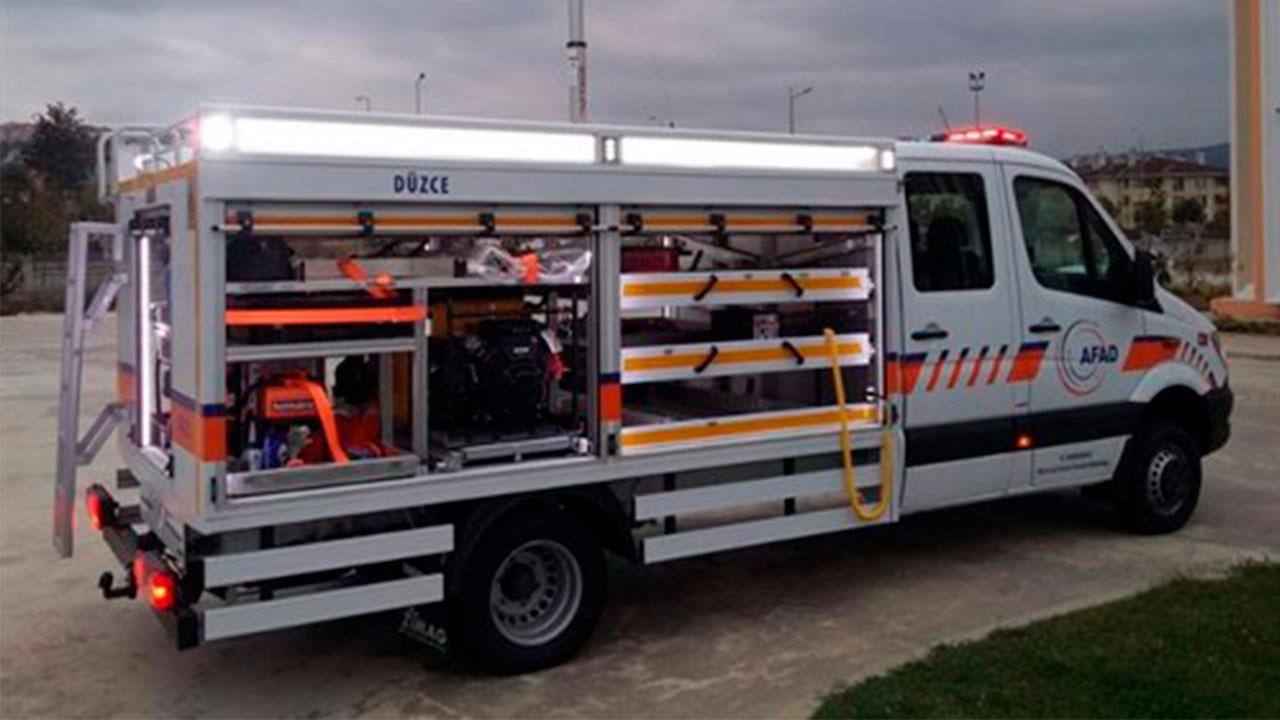
Specially designed body It houses equipment such as hydraulic and charged shearing tools, generators, concrete breakers, multi-purpose cutters, audio and video call devices, lifting pads, lighting sets. Vehicles on the body raiseable lighting poles with in front a crane supported by. double cabin With its seating area, it also makes it possible for 7 personnel to arrive at the scene at the same time.
Light tonnage search and rescue vehicles
Light tonnage search and rescue vehicles 4×4 traction has system. 5.5 ton towing cranecar radio, navigation device, backup camera and telescopic lighting These vehicles, which are equipped with the a special upper body contains. This bodywork contains all the equipment needed to save lives in a light tonnage search and rescue vehicle.

8×8 amphibious search and rescue vehicles
AFAD 8×8 Amphibious Search and Rescue Vehicles, in swamps, shallow waters, on rough and sloping lands with no roads, heavy snow fields It can easily move through the debris. In this way, it saves lives in disasters that our country frequently encounters, such as floods, floods, avalanches, landslides, fires and earthquakes.
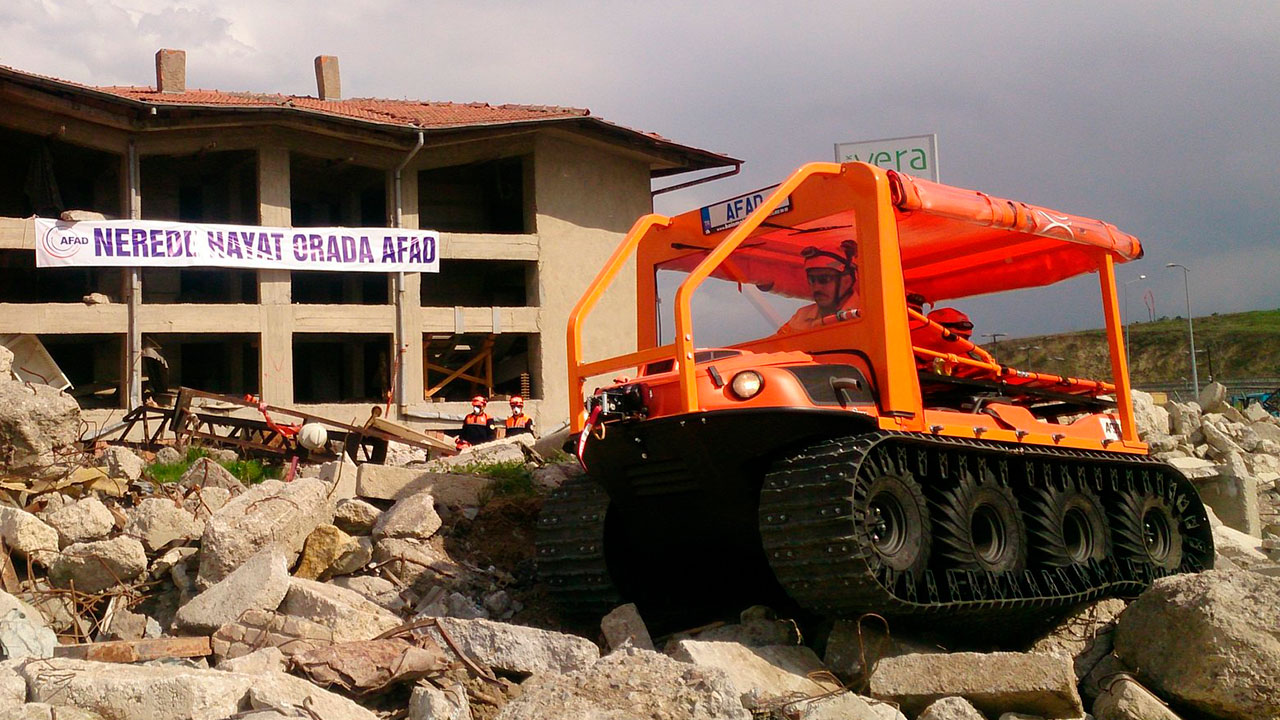
50 degree steep slopethey may come out, 45 degree side tiltIt can travel on lands. with 35 liters of gasoline 8 hours of non-stop search and rescue can work. Vehicles with a capacity to carry 6 personnel on land and 4 personnel on water, can carry 3 personnel when a stretcher is placed.
After AFAD added amphibious vehicles to its fleet, the desired helicopter support for search and rescue in nature is percent. 80 percent reported to be decreasing. The reason for this is that vehicles allow land access to points that previously required helicopters to reach. It is stated that while 5 helicopter flights were needed for search and rescue before these vehicles were included in the inventory, this need has decreased to 1 now.
Mobile earthquake simulation centers
AFAD Mobile Earthquake Simulation Centers, gaining the right behavior patterns in disasters with experience provides. centers, individuals serve to create the right reflex for the moment of disaster it does. It also contributes to the creation of disaster awareness among citizens by providing the closest earthquake experience to reality.

With mobile centers all over Turkey ‘disaster awareness training tour‘ is carried out. Thanks to these centers, AFAD teams go to the provinces and the farthest districts and bring the citizens together with earthquake experience and applied education.
The centers where an earthquake with a magnitude of 7.2(Mw) can be experienced consists of 3 parts:
- Earthquake Simulation (6 people),
- Fire Simulation and
- 3D Flood Simulation (5 people)
Mobile CBRN decontamination centers
AFAD Mobile CBRN Decontamination Centers, masses, environment, vehicles, victims, responding personnel and equipment chemical, biological, radiological and nuclear Provides removal from agents. These vehicles can be installed at any point while the creatures and objects exposed to the agents are taken to safe areas. mobile centers stands out as.
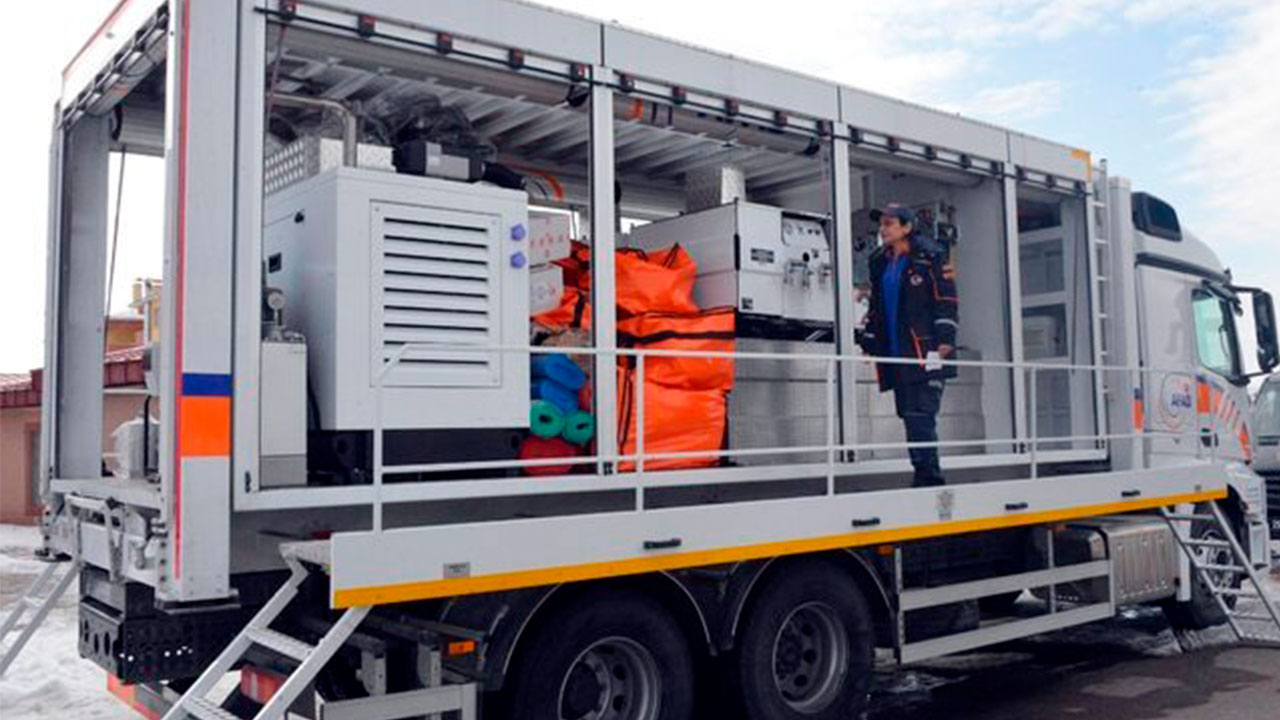
14,000 lumens to illuminate the work area above centers light tower is located. With a 40 square meter casualty decontamination tent purification of 60 victims from CBRN agents per hourcan provide. In centers with a carrying capacity of 26 tons, mobile digital recorder DVR is also included.
In the centers, trailer or container, fixed water tank as well as personnel, clothing, equipment and vehicle decontamination (purification) units, 30 KVA generator, waste water and suction pump, cleaning agent tank, hose reel, fire first response system, A , B, C and D type protective suits and under-vehicle purification apparatus.
CBRN response tools
AFAD CBRN Response Vehicles take part in the first response to Chemical, Biological, Radiological, Nuclear (CBRN) agents. The vehicles that strengthen Turkey’s hand in the field of civil defense are fully equipped.

This is how we can help earthquake victims:
So what do you think about this subject? You can share your views with us in the comments section.


 shiftdelete.net
shiftdelete.net